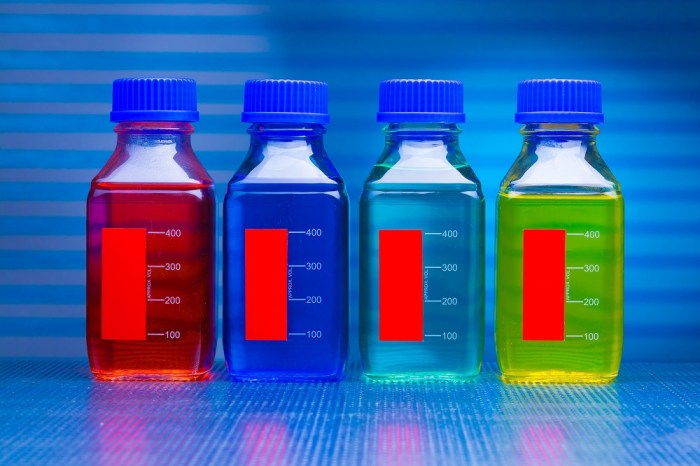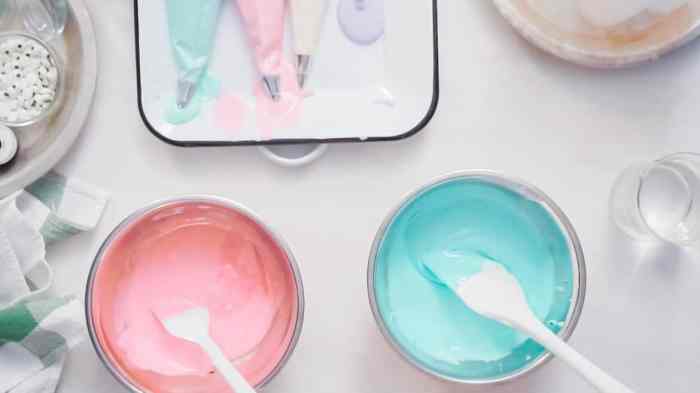Signs of Spoilage in Food Coloring: Can Food Coloring Go Bad

Can food coloring go bad – Food coloring, despite its seemingly indestructible nature, can succumb to the relentless march of time and the insidious whispers of spoilage. While it may not harbor the same dangers as spoiled produce, noticing changes in your food coloring is crucial for maintaining the vibrancy and safety of your culinary creations. Ignoring these subtle clues could lead to unexpectedly dull hues or, in rare cases, potential contamination.The telltale signs of food coloring deterioration are often subtle, a silent drama unfolding within the bottle.
These changes are usually visual or olfactory, acting as a silent alarm system warning of impending degradation.
Ever wondered, “Can food coloring go bad?” The answer depends on the type! Water-based colorings tend to lose their vibrancy over time, but oil-based food colorings, like those you can find at oil based food coloring websites, often have a much longer shelf life due to their composition. However, even oil-based colors can eventually degrade, so always check for signs of separation or discoloration before use to ensure your baked goods remain vibrant and delicious!
Visual Changes Indicating Spoilage
Changes in the visual appearance of food coloring often serve as the first warning signs of spoilage. These alterations can manifest in several ways, depending on the type of food coloring. For example, liquid food colorings might exhibit a noticeable fading of their original hue. A once vibrant red might become a pale, washed-out pink, indicating a loss of pigment concentration and potential degradation.
Similarly, the formation of a precipitate – a solid substance settling at the bottom of the container – is another strong indicator. This sedimentation signals a breakdown of the coloring agent and possible contamination. In some instances, particularly with natural food colorings, mold growth might be observed, appearing as fuzzy or slimy patches on the surface. This is a clear sign that the food coloring has become unsafe for use.
Spoilage Signs in Different Food Coloring Types
Different types of food coloring exhibit spoilage signs in varying ways. Water-soluble food colorings, commonly used in baking and beverages, are prone to fading and precipitation. The intensity of their color diminishes gradually, and a sediment layer may form at the bottom of the container over time. Oil-based food colorings, frequently used in decorating cakes and pastries, might show signs of separation, with the color components separating into distinct layers.
Powdered food colorings, while generally more stable, can clump or become lumpy, suggesting moisture absorption and potential microbial growth. Natural food colorings, derived from plant or animal sources, are particularly susceptible to spoilage and may exhibit a change in texture, smell, or color more quickly than synthetic counterparts. For example, a beetroot extract might lose its deep red hue and develop a musty odor, indicating deterioration.
Olfactory Changes Indicating Spoilage, Can food coloring go bad
While visual cues are often the first to be noticed, a change in the smell of food coloring can be an equally important indicator of spoilage. Most food colorings, when fresh, are odorless or possess a very faint, characteristic scent. However, as they deteriorate, they may develop an off-putting odor, ranging from musty and sour to outright foul.
This pungent smell often accompanies mold growth or bacterial contamination and is a definitive sign that the food coloring should be discarded immediately. This is especially true for natural food colorings, which are more prone to microbial growth due to their organic nature. The development of a rancid or fermented smell should be taken as a clear indication of spoilage.
Flowchart for Identifying Spoiled Food Coloring
Imagine a flowchart. The starting point is “Is there a visual change?”. If yes, follow the branch to “Is there color fading or precipitation?”. If yes, it leads to “Possibly spoiled – discard if smell is off”. If no to color fading or precipitation, the branch goes to “Is there mold growth?”.
If yes, it’s “Definitely spoiled – discard immediately”. If no to mold growth, it leads back to “Possibly spoiled – discard if smell is off”. If the initial answer to “Is there a visual change?” is no, the flow goes to “Is there an unusual odor?”. If yes, it’s “Possibly spoiled – discard”. If no, it leads to “Food coloring appears to be fine”.
This flowchart provides a simple guide for assessing the condition of your food coloring.
Testing for Spoilage

Determining whether food coloring has degraded requires a more nuanced approach than a simple sniff test. While our senses can sometimes detect off-putting odors or changes in consistency, more reliable methods involve observing visual cues and employing rudimentary chemical tests. These methods offer a more objective assessment of the coloring’s integrity.Visual Examination of Food Coloring is a crucial first step.
Changes in color intensity, the appearance of precipitates (solid particles forming in the solution), or unexpected cloudiness can all be indicators of degradation. For instance, a vibrant red food coloring that has faded to a dull pink or developed a murky appearance might suggest spoilage. Similarly, the formation of a sediment at the bottom of the bottle is a clear sign of degradation.
Visual and Chemical Tests for Food Coloring Quality
A simple visual inspection can reveal significant clues about a food coloring’s condition. Observe the color intensity, looking for any fading or discoloration compared to a fresh, unopened bottle of the same product. Note the clarity of the solution; cloudiness or the presence of sediment (a settled solid) are indicators of potential spoilage. Changes in viscosity, such as thickening or thinning, could also be relevant.
Beyond visual cues, a chemical test involving pH measurement could offer further insight. A significant shift in pH from the expected value for that particular food coloring might suggest chemical breakdown.
Comparative Effectiveness of Testing Methods
Visual inspection is quick, easy, and requires no specialized equipment. However, its subjectivity limits its reliability. A trained eye can discern subtle differences, but the interpretation can be influenced by lighting and individual perception. A pH test offers more objective data, but it requires a pH meter, adding cost and complexity. The effectiveness of either method is enhanced by comparing the sample to a known good sample of the same food coloring.
Therefore, combining visual examination with a pH test provides a more comprehensive assessment.
Hypothetical Experiment: Testing Food Coloring Spoilage
This experiment aims to compare the degradation of three different food colorings (red, blue, and green) under varying storage conditions. Experimental Setup: Three identical sets of vials are prepared. Each set contains a sample of red, blue, and green food coloring. One set is stored at room temperature, the second in a refrigerator (4°C), and the third in direct sunlight. All vials are sealed tightly to minimize evaporation.
Procedure: The color intensity of each food coloring is measured using a spectrophotometer at the start of the experiment (day 0) and then at regular intervals (e.g., weekly) for a period of three months. The pH of each sample is also measured at the same intervals using a calibrated pH meter. Visual observations, noting changes in color, clarity, and the presence of any sediment, are recorded alongside the quantitative data.
Expected Outcomes: The food coloring stored at room temperature and in direct sunlight is expected to show the most significant degradation. This would manifest as a decrease in color intensity, measured by the spectrophotometer, a change in pH, and visually observable changes like fading or sediment formation. The refrigerated samples should exhibit less degradation, showing relatively minor changes in color intensity and pH.
The experiment will quantitatively demonstrate the influence of storage conditions on food coloring stability, validating the importance of proper storage to maintain quality.
Query Resolution
Can I reuse food coloring after a project?
Generally, yes, if it’s been stored properly and shows no signs of spoilage. However, contamination is a risk, so use your judgment. If in doubt, discard it.
Does freezing food coloring extend its shelf life?
Freezing can help extend the shelf life, particularly for liquid food colorings, but it’s not a foolproof method. Proper airtight storage is still crucial.
What are the health risks of using expired food coloring?
The risks vary depending on the type of food coloring and the extent of spoilage. In some cases, bacterial growth could lead to illness. Always err on the side of caution and discard anything questionable.
Can I tell if food coloring is bad by smelling it?
While not always reliable, a rancid or off-putting odor is a strong indicator of spoilage. Trust your senses.
